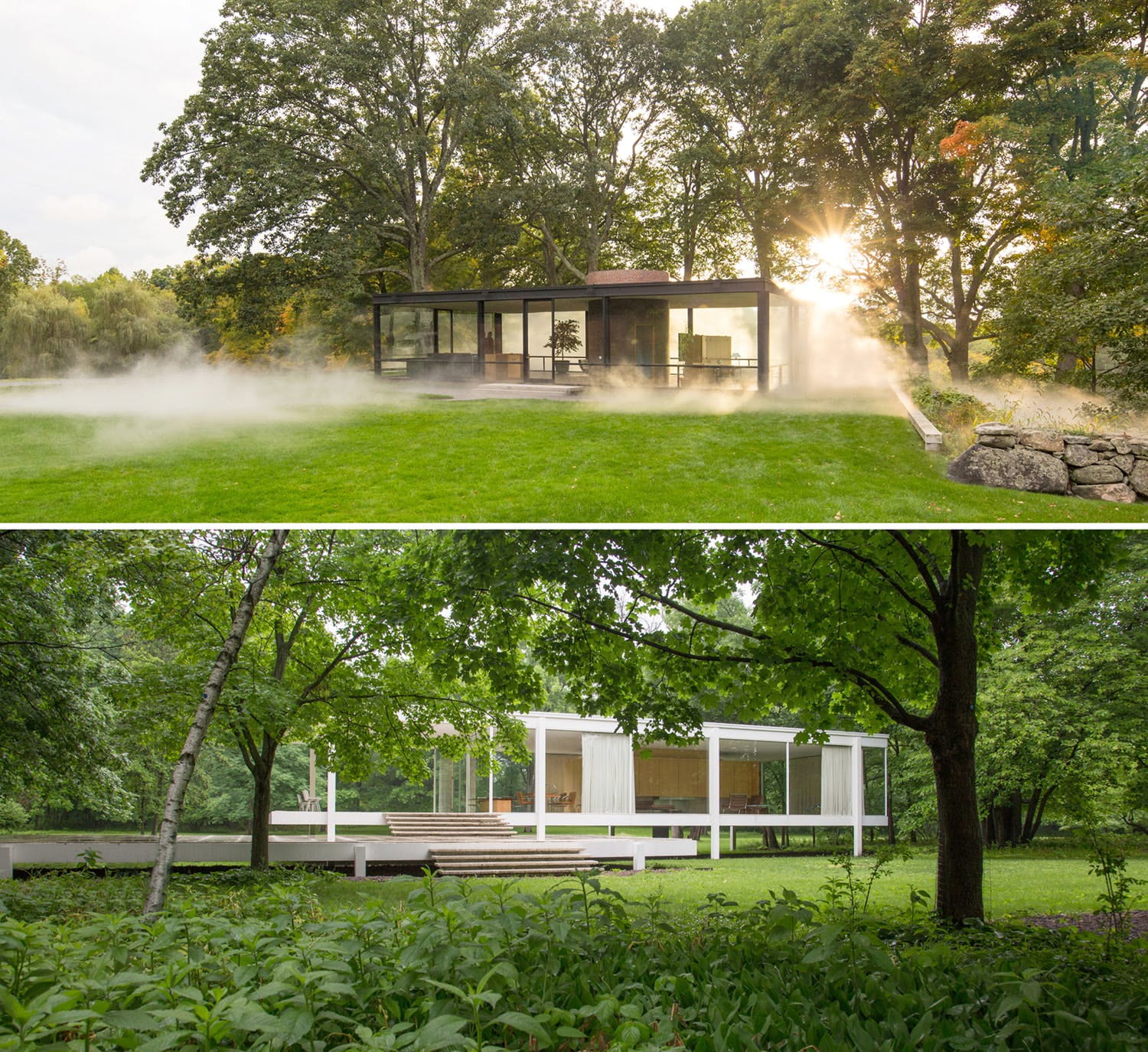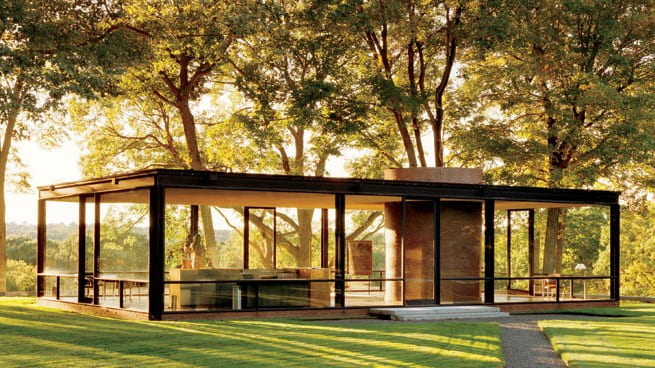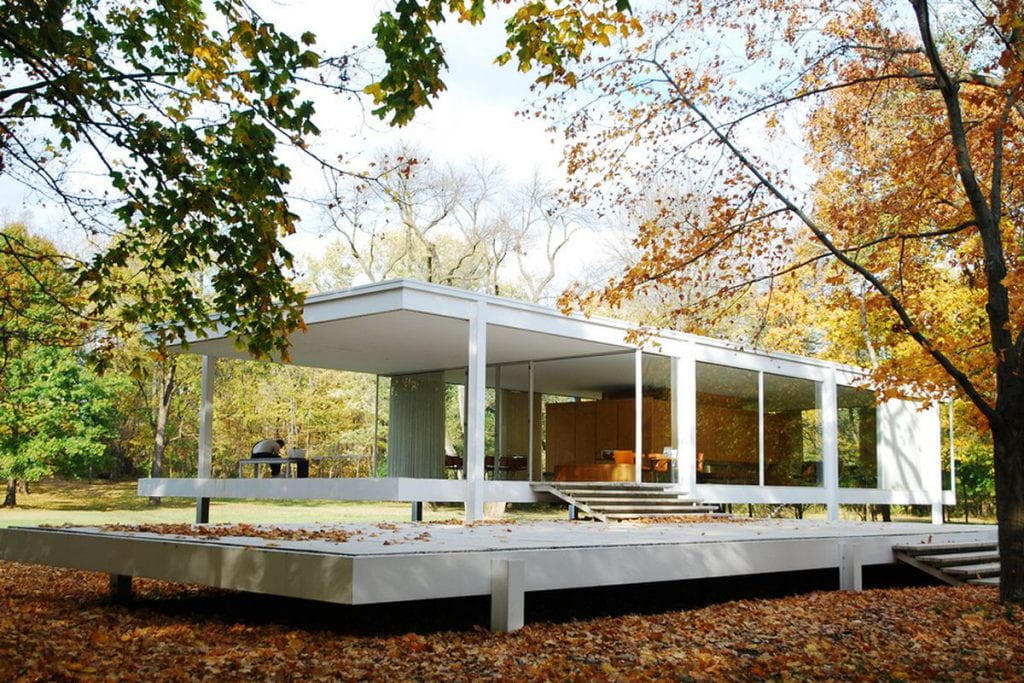Philip Johnson’s Glass House probably wouldn’t exist if it weren’t for Mies van der Rohe’s Farnsworth House. Near the end of this week’s lecture Thomai mentioned the two homes and how it would be interesting to explore the similarities and differences of the two structures, so I decided to do so. Mies van der Rohe was fascinated with building homes and structures on a grid and he stuck to that grid religiously. The walls as well as furniture would all be placed along a grid which often made his designs, though beautiful, feel rigid. Mies built Farnsworth House from 1945-51 which inspired Johnson’s Glass House built from 1948-49. Farnsworth House is sandwiched in between three slabs and built up on posts, most likely inspired by Le Corbusier. Glass House was less rigid than Farnsworth House because Johnson was not limited by building and designing on a grid. He utilized herringbone tiled floor which created a fluidity in the space, something Mies would not do. Both houses are very horizontal and use glass as exterior walls which was a first at the time. Both homes were built in the same area around the same time and share the North Eastern US mentality of being one with the ground and integrated with nature. Because Glass House was inspired by Farnsworth House, Johnson was able to learn from Mies’ design and create his own evolution of it. If Mies hadn’t created Farnsworth House, Glass House would not exist, at least not in its current state.
This isn’t related but in recitation we spoke about the readings and in particular “The Closed World of Ecological Architecture” by Peder Anker. We spoke about architecture and sustainability and whether sustainable architecture is even possible. Both readings from this past week made me think about this and it’s a really important topic to think and talk about especially considering our role as future architects and designers.


